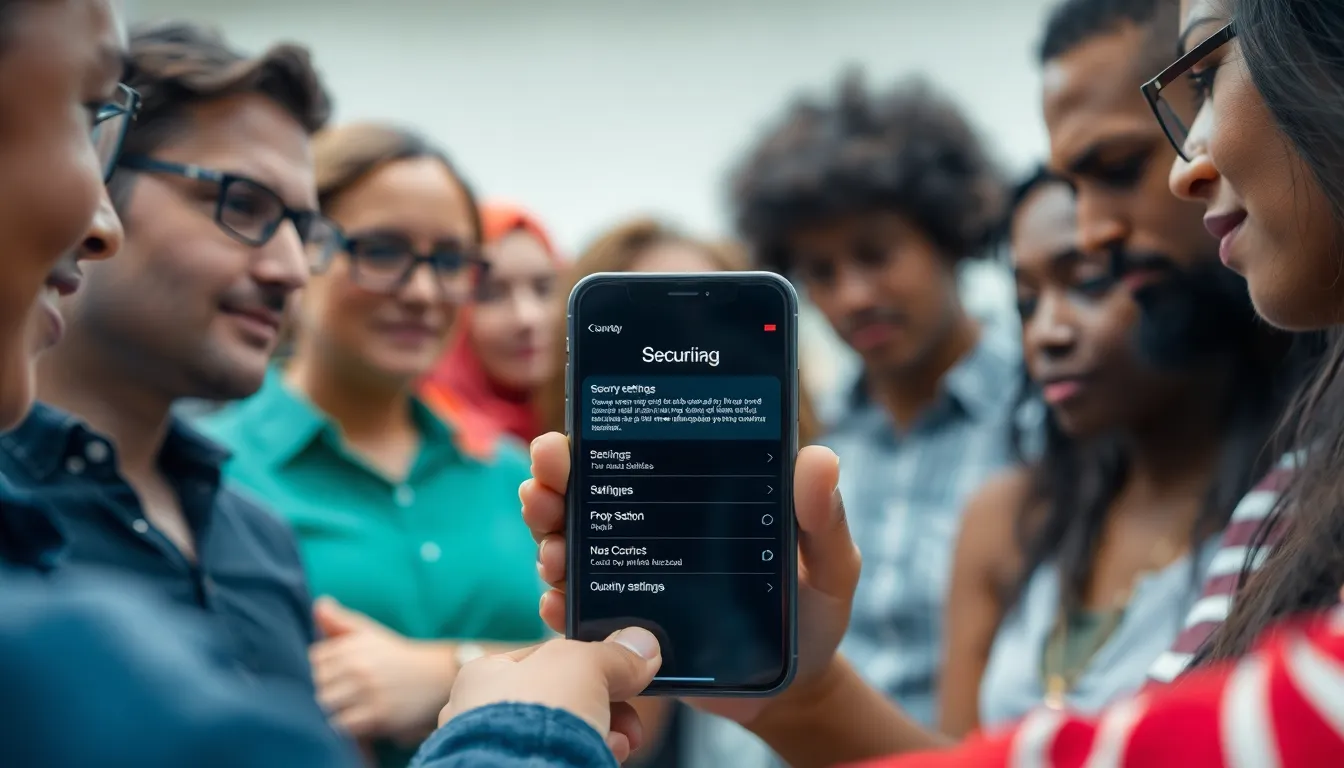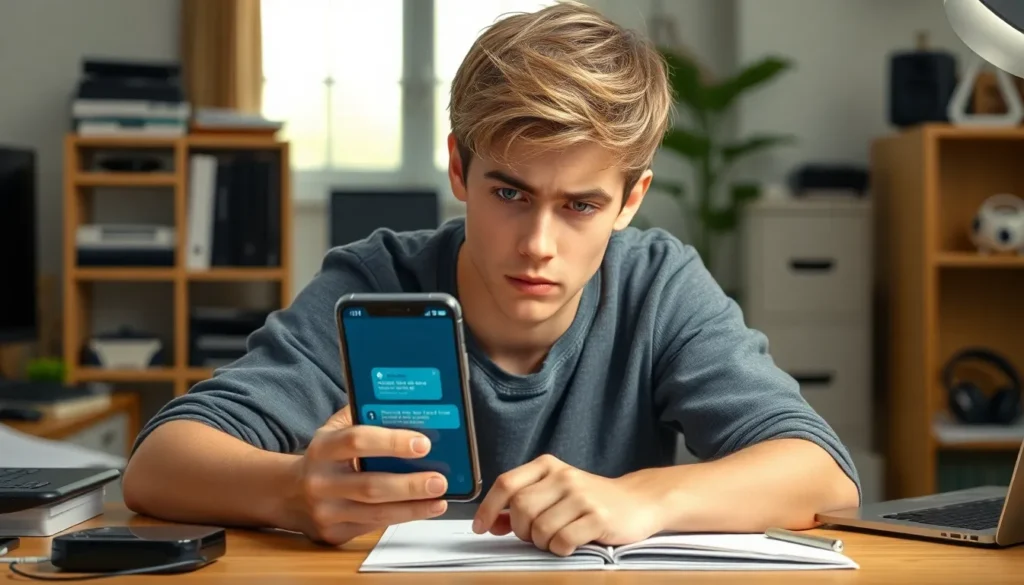In a world where your iPhone holds more secrets than your diary, discovering it’s been hacked can feel like finding out your cat has been secretly judging you. Imagine the horror of realizing your personal data is in the hands of a digital ninja. But fear not! With a few clever tricks up your sleeve, you can unveil the truth lurking behind your screen.
Table of Contents
ToggleSigns That Your iPhone May Be Hacked
Recognizing signs of a hacked iPhone is crucial for personal security. Several indicators can signal unauthorized access.
Unusual Behavior of Your Device
Unexpected crashes often indicate potential hacking. Users might notice slower performance, despite having adequate storage. Apps may open or close without input, and settings can change spontaneously. Additionally, the battery drains significantly faster than usual, suggesting background activity by malicious software. Unfamiliar notifications also occur, alerting users to actions that were not initiated. If these patterns emerge, further investigation into device security becomes necessary.
Unexpected App Installations
New apps appearing without user consent raise red flags. Users should regularly review installed applications for anything unfamiliar. Unauthorized software may operate in the background, collecting personal information without knowledge. Unusual permissions granted to apps, such as access to contacts or location data, can also signify intrusion. Regularly monitoring app installations helps users stay aware of their device’s security status. Be proactive in uninstalling suspicious apps to protect personal data.
Checking Your iPhone Security Settings

Ensuring your iPhone’s security settings are intact is essential in identifying any potential hacking. Regular monitoring protects personal data from unauthorized access.
Reviewing Your App Permissions
Check app permissions frequently for any discrepancies. Open settings and navigate to Privacy, where users can view which apps access sensitive information, such as location or contacts. Unauthorized access often indicates a security breach. Remove permissions for unfamiliar apps immediately. Additionally, users should delete any strange applications that seem suspicious. Regular audits of app permissions reduce risks and uphold data integrity.
Monitoring Location Services
Location Services can reveal whether someone has unauthorized access. Access settings and tap on Privacy, then Location Services. Review the list of apps that have requested location access. Disable access for apps that don’t require it or seem unfamiliar. Users should also consider temporarily stopping Location Services for added security. Monitoring this feature helps prevent location tracking and maintains greater privacy.
Investigating Your Accounts
Monitoring account activity helps identify any unauthorized access to personal information. Focusing on security enhances overall protection.
Checking for Unrecognized Devices
Examine the list of devices linked to your Apple ID. Navigate to Settings, tap your name, then select “Devices.” Remove any unfamiliar devices immediately. Unrecognized devices often indicate unauthorized access to an iPhone. Log out from suspicious devices to limit further security breaches. Obtain confirmation from Apple if there’s uncertainty regarding device legitimacy. Resetting the password for your Apple ID strengthens security.
Reviewing Account Activity
Review recent activity on accounts linked to your Apple ID. Access email sent and received for unfamiliar logins or transactions. Check your iCloud account for unauthorized file changes or deletions. Look for changes in settings that you didn’t initiate, as these may suggest hacking. Pay attention to any alerts regarding failed login attempts. Strongly consider enabling two-factor authentication for additional security. Taking these steps secures personal accounts against unauthorized access and safeguards sensitive data.
Steps to Take If You Suspect Hacking
If there’s a chance your iPhone has been hacked, taking swift actions can help protect personal data and secure the device.
Securing Your iPhone
Begin by updating the device’s software to the latest version. Keeping the iPhone updated helps patch security vulnerabilities. Next, change your Apple ID password using a strong combination of letters, numbers, and symbols. Enabling two-factor authentication adds an extra layer of security. Review privacy settings regularly, focusing on app permissions. Removing access from unfamiliar apps minimizes risks. Restarting the iPhone may help clear any malicious processes. Checking for unfamiliar profiles under Settings can reveal unauthorized access. Lastly, consider restoring the device to factory settings if significant issues persist, ensuring a fresh start.
Reporting the Incident
Document all suspicious activities and take screenshots when necessary. Reporting the incident to Apple supports investigation efforts. Navigating to the Apple support website provides additional resources and troubleshooting options. Contacting your local authorities about any potential data breaches ensures proper legal action. It might be beneficial to inform your financial institutions of any unusual account activity. Monitoring credit reports regularly allows you to catch unauthorized transactions swiftly. Utilize identity theft protection services for ongoing security and support. Staying proactive aids in safeguarding personal information and strengthens overall digital safety.
Detecting a hacked iPhone can be daunting but staying vigilant is key. By recognizing the signs and taking proactive measures users can safeguard their personal data. Regularly reviewing privacy settings and app permissions is essential to maintain security.
If any suspicious activity is noted it’s crucial to act quickly. Updating software and enabling two-factor authentication adds layers of protection. Documenting unusual occurrences and reporting them can further enhance safety.
Ultimately a proactive approach not only helps in addressing potential hacking but also strengthens overall digital security. Staying informed and taking action can make all the difference in protecting personal information.








